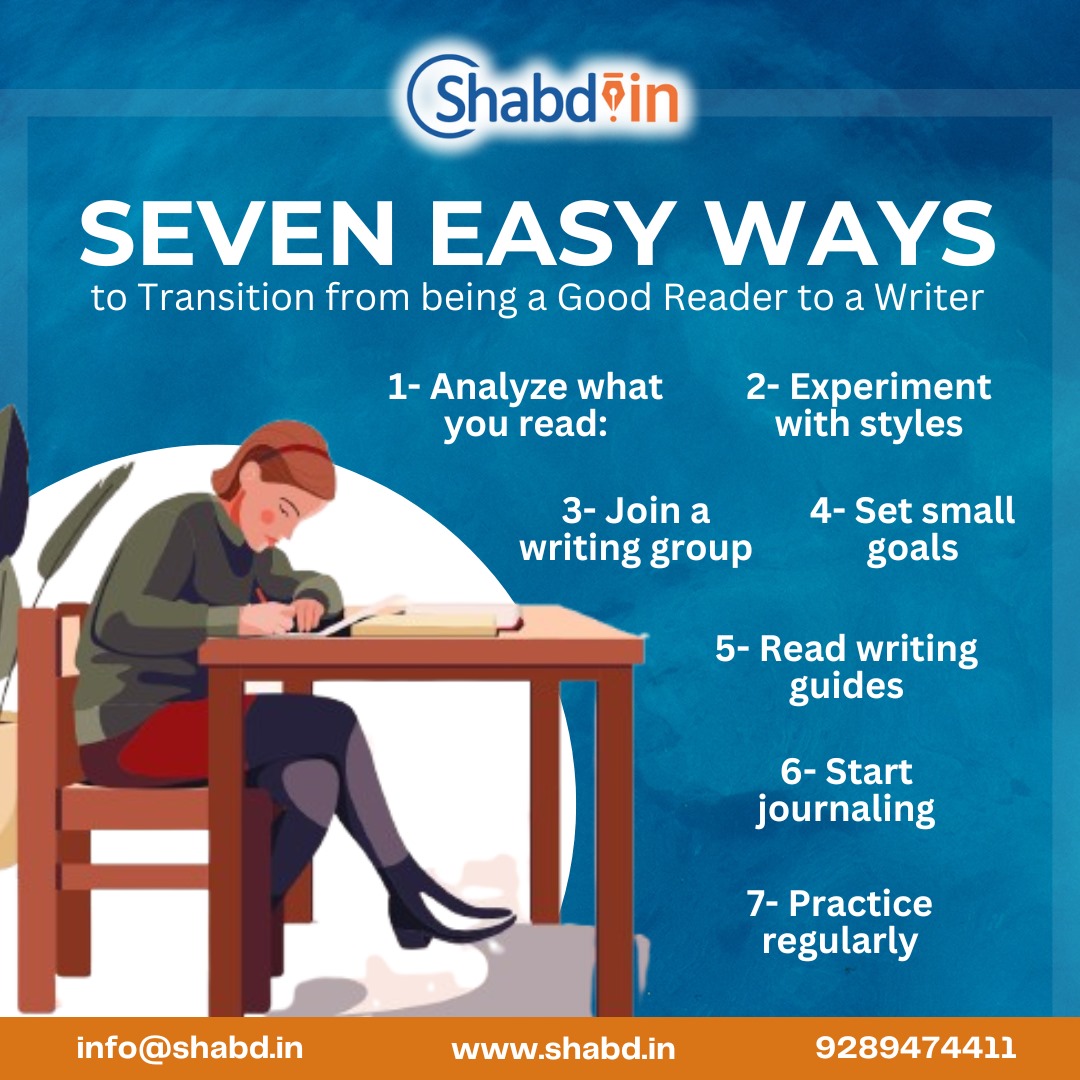Making the leap from being an avid reader to becoming a writer is a rewarding journey. Here’s a more detailed look at seven ways to make that transition:
1. Analyze What You Read:
When you read, take note of what works well in the story—how authors build tension, use language, or develop characters. Reflect on the structure of the plot, the pacing, and how dialogue is used. This helps you understand the mechanics behind a great story and gives insight into what you might want to emulate or avoid in your writing.
2. Experiment with Styles:
Explore different genres and writing styles to find what resonates with you. Try your hand at poetry, short stories, or essays. Experimenting allows you to discover your own voice, as well as understand which elements from various styles you can incorporate into your work.
3. Join a Writing Group:
Writing can be solitary, but joining a writing group provides a supportive community for feedback, accountability, and encouragement. Sharing your work with others and critiquing their writing can help you gain new perspectives and improve your skills.
4. Set Small Goals:
Start with achievable targets, like writing a certain number of words each day or completing a short story within a month. These small goals build momentum and make the writing process feel less daunting, helping you to gradually build a consistent writing habit.
5. Read Writing Guides:
Books on the craft of writing, such as Stephen King’s On Writing or Anne Lamott’s Bird by Bird, can provide practical advice and inspiration. They offer insights from experienced writers that can help you understand the nuances of storytelling and refine your approach.
6. Start Journaling:
Journaling is a great way to express thoughts freely and keep your creative muscles active. It’s a space to practice writing without judgment, record daily observations, or explore new ideas that could later become story material.
7. Practice Regularly:
Writing is a skill that improves with practice. Set aside time daily or weekly to write, even if it’s just a few paragraphs. Over time, this regular practice will help you develop discipline, improve your writing fluency, and transition smoothly from reader to writer.
These steps, combined with a love for reading, can ease the transition into writing and set you up for success in crafting your own stories.

